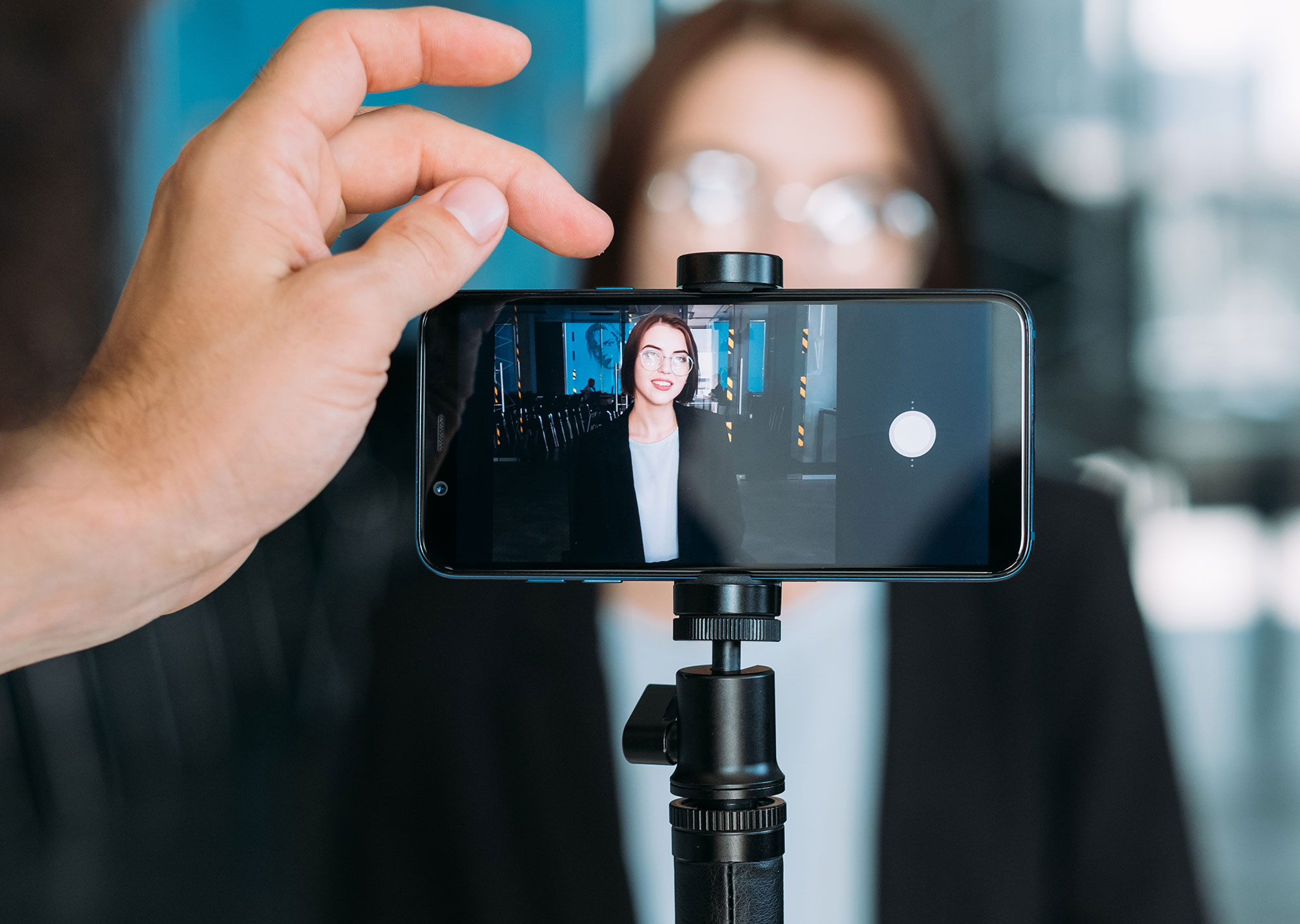Did you know that 88% of people who visit your website won’t return if they had a bad experience?
That’s a pretty high number when it comes to capturing leads. After all, no one wants to lose 88% of their potential customer base!
On the other hand, providing a good experience with your website and getting people to spend more time on it leads to a greater chance that they’ll become a customer.
But how do you get someone to spend more time on your website?
Today, I’m going to break down the top 10 ways you can improve your website to keep people on it longer and provide them an excellent experience.
1. Get Their Attention Immediately
You’ve got literal milliseconds to grab a visitor’s attention and get them to stay on your website, so don’t waste time. Make it really clear what value you’re providing with your business.
Think about it this way – what’s your customer’s number one problem? Your main headline should address that main problem and demonstrate how you can help.
You Need a Budget, for instance, tells you immediately that they help you “Gain Total Control of Your Money.” Moz tells you that “There’s a Smarter Way to Do SEO.” My client Third Age Mojo tells their readers to “Redefine Aging and Empower Yourself to Grow.”
The best way to capture your visitors’ attention immediately is to do so with a powerful opening headline and visuals that reinforce your business can help solve their problems.
2. Provide Valuable Content
Once you have your audience’s attention, the best thing you can do? Keep hold of it!
I know, that sounds easier said than done right? But when it comes to writing content for your website, you have to keep your customers at the forefront of your copy.
Ask yourself a few questions:
- Why does my service matter to them?
- What problem am I solving for my customers?
- What pain points am I alleviating?
- Why do they care at all?
When you focus on the whys and your customer, you’ll be able to produce content that they actually find valuable and want to read.
Don’t write for SEO or search engines or whatever you think is going to help you game the system either. Write to ensure you’re answering your customer’s questions and focusing on why it all matters to them.
3. Improve Your Content’s Readability
You can have the best website copy in the world, but if you’re not delivering it in a fast, easy way you can still lose your customers.
Think of website copy like a textbook. No one is going to read every single word on the page, but they will skim it to get the post important information. So make it easy to skim!
Keep sentences succinct (hey, I know I struggle with this) and keep paragraphs short. Getting straight to the point will not only help keep people interested, but it will help them to make decisions faster.
You also want to break up your copy into readable chunks. Think bulleted lists (you can take it up a notch and make these super visual with icons and designed out), subheadlines to break up those paragraphs and ideas, and even bold important pieces of a sentence.
When you add some visual cues to break up your copy, you’re making it far more readable and easy to skim while still getting the important ideas across.
4. Use High Quality Images
You know a secret that can make or break a beautiful website design? The photography! You can have the cleanest, most modern design there is, but if your images are grainy or subpar, it immediately takes your website from gorgeous to substandard.
Hiring a photographer to get those images can be expensive, which I totally understand. There are, however, lots of free stock photography websites like Unsplash that give you a ton of great, high-quality images that don’t look like your typical stock photography.
However, if you can get a few actual shots of your product or you and your company, it’s worth finding a local photographer to come in and do a shoot for a couple of hours. Even 30-50 high-quality images will be enough to fill up your website and be useable across social media platforms.
Just remember, as with your content, your photography should be customer focused to some degree. Especially if you’re a coach, it shouldn’t be all headshots, but photos of how your customers look when they work with you.
5. Use Engaging Videos
Want to keep someone on your site for a few minutes? Give them a video to watch! Over time, we’ve gotten so used to consuming video content that it’s not even a question for most of us to click play on those videos.
The great thing about advances with phones, too, is that you can actually shoot a great quality video right on your phone. There’s no need to go out and buy fancy equipment. You can use apps like Canva or iMovie to edit the video and even mix in some of that photography you shot.
When it comes to actually using videos on your website, you can do it one of two ways: as a background behind text (no sound typically with these, just visuals) or as an actual video they can watch and play.
Background videos you’d typically upload straight to your website, but if you want your customers to be able to watch an actual video, consider using YouTube or Vimeo to host that video and just add the embed code. That can not only help build up your channels, but it reduces the load on your website and keeps it loading quickly.
6. Show Credibility and Social Proof
OK, so you now have great photography, great content, and a video to keep someone interested and staying on your website longer than a few seconds. Now it’s time to reinforce everything you’re saying.
That’s when you have to show some credibility and back up those claims! The best way to do that? Using a form of social proof. Social proof is when you have a third-party vouching for you and your business. This can be as easy as showcasing happy clients’ testimonials, logos of other companies you’ve worked with if you’re a B2B company, product reviews, or even media appearances.
Social proof is all about reinforcing the message you’re trying to deliver about your business, so make sure it’s promoting how you help your customers and the pain points you’re resolving like your content does as well.
Simply put, your social proof should be something that matters to a prospect and helps them to make a decision.
7. Link to Other Content in Your Website
A really important way to keep people moving within your website? Make it easy for them by linking to other pages in your site!
Yes, you can do this simply and easily with your main and footer navigations, but you also want to add other links throughout the content of your website. Do you have a section of content that talks about a service? Link to that service’s main page. Mention a companion product in a description of that product? Link to that product.
You can use in-text links or you can also use buttons to move people. The key is to make it super obvious that whatever it is is a link and can take them some place else in the website where they can learn more about whatever you’re highlighting.
The more pages a customer digs through, the more they learn about your business and the more likely they are to reach out or become a customer.
8. Use Calls to Action on Every Page
Someone gets to the bottom of one of your pages – now what?
Tell them exactly what you want them to do with a call to action!
Your homepage should be about the only page on your website without a singular call to action (and that’s because it should have multiple). All of your inside pages should tell your dream client – what’s next?
You’d be amazed at how fast you can lose a potential customer when you don’t give them the answers to that question. If you don’t tell them how to work with you, clearly, how will they know what to do?
Depending on your business, your calls to action could be a product purchase, scheduling a discovery call, or filling out a contact form.
Decide what you want someone to do when they get to the bottom of a certain page. Ask yourself “What now?” That’s your call to action! Now, you just have to tell them in the call to action to “Call us now” or “Fill out this form” (in better copy of course). That’s it.
9. Create Thank You Pages with Helpful Content
I learned this trick from an old boss and honestly it’s still kind of genius. If your prospect has filled out a contact form, you’ve got the lead but that doesn’t mean they have to be done on your website.
After someone fills out a form, take them to a confirmation Thank You page. This not only helps them to understand that their contact form has actually gone through (and is a lot more noticeable than a simple confirmation message below the form) but it’s valuable real estate where you can keep them reading.
On that Thank You page, direct your prospects to your blogs to read more about you, give them a free PDF or guide that might be helpful, link them to a helpful video, or even direct them back into the main pages of your website.
What you put on this page really depends on your audience and what they want, but it’s a trick that not many utilize so it can definitely help you to stand out.
10. Decrease Your Page Load Speed
You have about 2-3 seconds from the time someone clicks on your domain for your site to fully load. If it doesn’t, you’ve lost them.
The best way you can keep someone on your website past that initial click is by ensuring that it’s optimized for speed and performance.
This can get into the technical, but if you have a WordPress website, luckily a custom WordPress coder can help (hint hint).
Two big keys to having your site load quickly are how it’s built and where it lives. You can use plugins for caching and other “tricks,” but if your site is built poorly and lives on a terrible server environment, you’ll be chasing solutions for ever. Personally, I’d recommend that you start with re-evaluating your website host (I have a handy how to find a website host guide for you). Once you’re on a high-quality server, you can start looking at other solutions.
One Step at a Time
Building up your website into a marketing machine that will keep browsers on it is just one step at a time.
If you’re looking to get people to spend more time on your site, start with your hosting company and site speed, then evaluate your headlines. Are they really bringing people in?
From there, dig into each of these ten steps and you’ll be amazed at not only how much longer people are spending on your website, but the quality of leads you receive, too.



